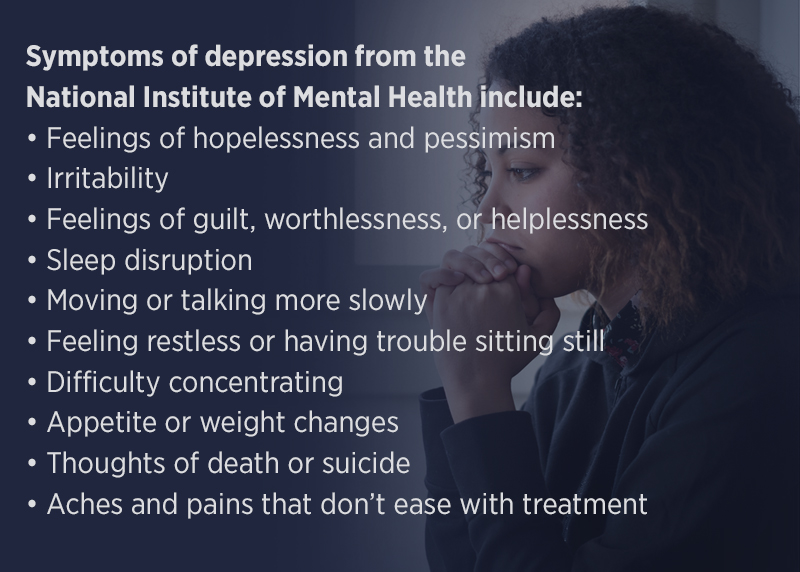FALLS CHURCH, Va. --
Imagine having feelings of worthlessness or helplessness. Imagine being unable to sleep, feeling restless and irritable much of the time, or even hiding under the covers afraid to face the day. Many who suffer from depression may not be able to concentrate at work or perhaps even get to work. Those experiencing high- and low-functioning depression know such feelings all too well.
But for women, there are certain times in their lives when a depression diagnosis is more common. Research has shown that hormonal changes at three stages of life—puberty, post-pregnancy, and during perimenopause—may trigger clinical depression.
Dr. Nancy Skopp, research psychologist at the Psychological Health Center of Excellence, described clinical depression, or major depressive disorder, as a depressed mood lasting at least two weeks and marked by a loss of interest in things that once were pleasurable. She noted that this period would contain a clear change from previous functioning. If someone isn’t completing work duties, shows up late for work, or experiences profound fatigue and avoids interaction with family and friends, depression could be the cause.
“Depression symptoms in women often occur around a reproductive event,” said Skopp, adding that there is some evidence that suggests women may have a chronic and recurrent course with longer and more frequent episodes than men.

Skopp cited statistics from the National Institute of Mental Health showing that 50-80 percent of new mothers may experience the “baby blues,” which usually appear about a week after giving birth and include feeling down, irritability, sleep problems, anxiety, and eating too much or too little. The difference is that the symptoms are mild and usually resolve in a week or two.
Postpartum depression is much more serious, Skopp said. Between 10 and 20 percent of new mothers experience depression, according to NIMH statistics. Symptoms of extreme sadness, anxiety, and exhaustion may make it difficult to complete daily activities as a new mother.
During perimenopause, usually between the ages of 40 and 50, when the ovaries gradually begin to make less estrogen, depressive symptoms combine with menopausal symptoms. Women may also experience other life challenges, such as the demands of caring for aging parents, a change in marital status, health problems, or negative attitudes about aging. Skopp said although men may experience similar stresses at midlife, the hormonal changes experienced by women may compound such stresses. “It’s a very challenging time,” she said.
Approximately 12 million women in the United States experience clinical depression each year, with one in eight experiencing depression in her lifetime, according to NIMH research. This rate of depression corresponds to hormonal changes in women, particularly during these three life stages, suggesting that female hormonal fluctuations may be a trigger for depression. Another trigger may be gender differences between women and men, which may be genetic or involve life stressors and coping styles.
Skopp says research shows women may have a greater tendency to internalize in the face of depressive symptoms. Men appear to be more likely than women to cope with such symptoms through behavioral distraction, such as doing something that takes the mind off depressive feelings. The result appears to be that more active distraction in men may shorten or prevent a depressive episode whereas internalization in women may prolong it. The Centers for Disease Control and Prevention reports that between 2013 and 2016, 10.4 percent of women experienced depression compared to 5.5 percent of men.
“Being in the military can magnify the depression triggers one might experience in the general population,” said Navy Cmdr. Paulette Cazares, associate director for mental health at the Naval Medical Center San Diego.
“The benefit of seeing depression as any other illness allows service members to realize the necessity of early treatment, and the ability to stay focused on career and personal goals,” Cazares said. “Psychotherapy or antidepressant medications are first-line options to treat depression and reduce chances of a relapse. Meditation and yoga as therapy have also been used successfully to alleviate depressive symptoms.”
If you have symptoms of depression, talk to your health care provider. A loved one showing symptoms should be encouraged to speak to a health care provider as well. Military OneSource also has resources and information available for service members and their families.